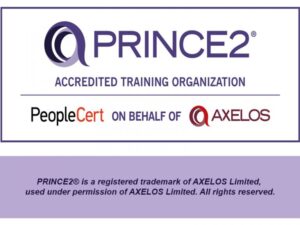In the dynamic world of business intelligence (BI), staying updated with the latest tools and trends is essential for success. Microsoft Power BI training can offer valuable skills to
harness the potential of Power BI for the future.
In this article, we’ll explore the current state of Power BI, recent updates that have enhanced its capabilities, anticipated features set to roll out, and how Power BI aligns with the evolving trends in business intelligence.
The Current State of Power BI
Microsoft Power BI, is a business intelligence platform enabling organisations to transform data into actionable insights. This comprehensive suite of tools provides capabilities for data preparation, data visualisation, and sharing insights across an organisation – all in one package. With millions of users around the world, its user friendly interface, rich visualisations, and seamless integration with other Microsoft products makes it a popular and preferred choice for many businesses.
Navigating the Rapidly Changing BI Landscape
In today’s evolving business landscape, staying updated with the latest tools and features is vital for organisations and professionals to remain competitive. There are good reasons why staying up to date with Power BI is crucial:
1. Enhanced Efficiency – With each update, Power BI becomes more efficient,
improving the speed and performance of data analytics. Staying updated ensures
that your organisation benefits from these performance enhancements.
2. Data Security – New updates often include improved security measures to protect
your sensitive data. In an age of increasing cyber threats, keeping your BI tool up to
date is a priority
3. Competitive Advantage – The latest features in Power BI allows for faster data
analysis and making informed decisions, setting you apart from the competition and
giving you a competitive edge.
4. User Experience – New features often enhance the user experience, making it
easier for your team to work with data and generate valuable insights.
5. Support and Compatibility – Microsoft continuously improves Power BI’s
compatibility with other tools and platforms. Staying updated ensures seamless
integration with your existing systems.
Recent Updates to Power BI
Microsoft has been actively improving Power BI, by releasing updates that have brought
significant improvements to the tool. Some key features introduced recently include:
1. DirectQuery for Power BI Datasets – This feature allows users to create
DirectQuery connections to Power BI datasets. This enables users to leverage the
speed and performance of DirectQuery, while still benefiting from the advantages of
Power BI datasets, such as enhanced modelling capabilities and reuse.
2. Power BI Goals – This is a new feature helping organisations set and monitor key
performance indicators (KPIs) effectively. Users can create, track and visualise their
KPIs progress over time, streamlining the goal-setting process and keeping teams
focused on objectives.
3. Export to PDF with Current Page – This update simplifies report sharing. Users can
export a report to PDF with the current page, ensuring only necessary information is
shared with stakeholders.
4. Power BI Report Performance Analyser – This feature assists users with optimising
report performance. It provides insights into report performance issues, by identifying
bottlenecks and suggesting ways to improve report responsiveness.
These updates have made a sizable impact on user experience and business
decision-making, as users have more tools at their disposal to create meaningful reports and dashboards. With performance improvements enabling faster data analysis, it allows organisations to make real-time decisions, plus the addition of features like ‘Goals’ simplifies the process of tracking and achieving key business objectives, which are crucial for data-driven organisations. Having access to up-to-date and ongoing staff training is important to ensuring you use the full power of Microsoft Power BI updates.
Anticipated Features of Power BI
While Microsoft often keeps upcoming features under wraps, we can make some educated speculations based on industry trends and user feedback:
1. Enhanced AI and ML Integration – Power BI is likely to further integrate AI and
machine learning technologies and we can anticipate even more advanced AI-driven
insights and predictive analytics capabilities.
2. Natural Language Query – There is a growing trend towards making BI tools more
accessible to non-technical users. Power BI could potentially introduce more natural
language query options, making it easier for users to ask questions in plain language
and receive meaningful insights.
3. Augmented Reality (AR) and Virtual Reality (VR) Support – With the rise of AR
and VR technologies, Power BI may explore options for immersive data visualisation,
creating a more interactive experience for users.
4. Improved Mobile Experience – With mobile BI on the rise, Power BI is likely to
enhance its mobile capabilities, allowing for better responsive design, offline access,
and more interactive features for mobile users.
5. Enhanced Data Connectivity – Power BI may expand its vast library of data
connectors to include even more diverse sources, ensuring users can access and
analyse data from various platforms and tools.
Power BI Trends in the Context of Business Intelligence
To anticipate where Power BI might be heading, we need to look at the overarching trends in the world of business intelligence:
1. Shift Towards More Real-Time Analytics – In a fast-paced business environment,
real-time data analysis is gaining importance. Organisations need to make decisions
based on the latest data to remain competitive. Its data modelling and transformation
capabilities enable users to process and visualise data as it arrives.
2. The Increasing Importance of AI and ML in Data Analytics – AI and ML are
revolutionising how data is processed and analysed. Features like AutoML and the
integration with Azure Machine Learning make it easier for users to leverage
advanced analytics and predictive modelling. With these technologies becoming
indispensable in generating insights from large datasets, it’s advisable to obtain
updated training on this aspect alone.
3. Growth of Self-Service BI Tools – Self-service BI tools empower non-technical
users to create reports and dashboards, reducing the dependency on IT departments
and enabling faster decision-making. With tools like Power Query and the DAX
language, with a two-day Microsoft Power BI Course, users can transform data and
build sophisticated calculations.
4. Integration with Other Business Tools and Platforms – To streamline operations,
BI tools are increasingly integrating with other software solutions, such as CRM
systems, marketing platforms, and ERP software. Microsoft’s commitment to
integration is evident in the seamless connection between Power BI and other
Microsoft tools, such as Excel, SharePoint and Teams. Power BI can also connect to
various data sources, enabling businesses to consolidate data from different
platforms.
Challenges and Considerations
While the future of Power BI looks promising, there are potential challenges and
considerations that organisations should keep in mind:
1. Data Privacy, Security and Quality– With increasing data breaches, maintaining
data privacy and security remains a significant concern. To protect sensitive
information, organisations must implement robust security measures when using
Power BI. Organisations should also invest in data quality assurance to ensure
reliable and accurate insights are generated from data.
2. Training and Skills – With the introduction of new features, organisations should
invest in training and development to ensure their teams can make the most of
Power BI’s capabilities.
3. Licensing Costs – Depending on the size and requirements of your organisation,
licensing costs can be a significant consideration. It’s essential to choose the right
licensing model that fits your budget and needs.
4. Change Management – The introduction of new BI tools and features often requires
changes in how the organisation operates. Change management is crucial to ensure
a smooth transition and user adoption.
In closing- The Future of Power BI and Microsoft Power BI Training
With a remarkable journey in the business world, Power BI continues to evolve, aligning with the latest trends, offering organisations and professionals a versatile and powerful tool for data analysis and reporting. Embrace the evolution, keep learning with specialist Microsoft Power BI Training, and harness the power of data to propel your business forward in the digital age.
Contact us with any Power BI course questions and we’ll be happy to assist.











